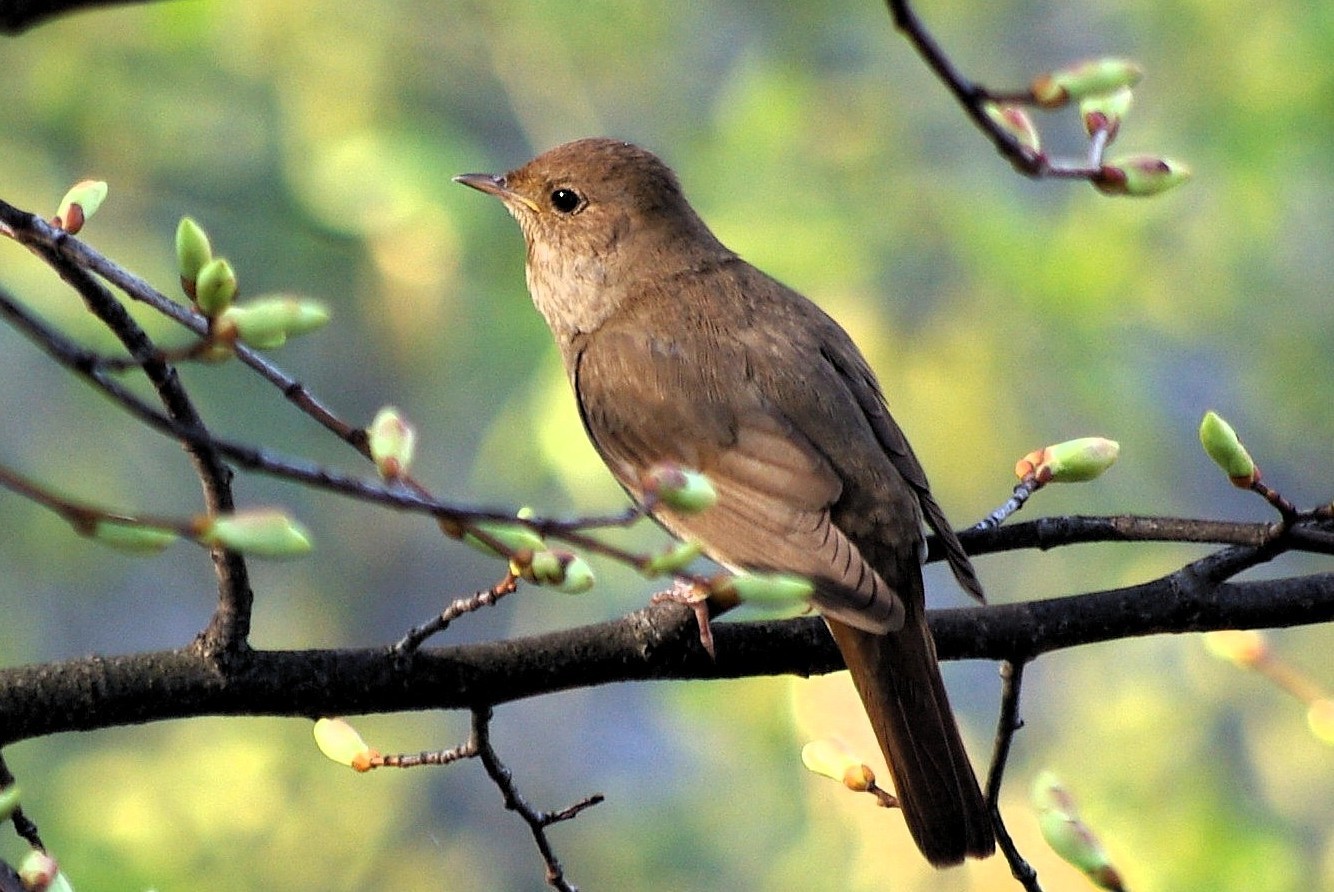Thrush Nightingale
A species of Nightingales and Allies Scientific name : Luscinia luscinia Genus : Nightingales and Allies
Thrush Nightingale, A species of Nightingales and Allies
Botanical name: Luscinia luscinia
Genus: Nightingales and Allies
Content
Description General Info
 Photo By cheloVechek , used under CC-BY-SA-4.0 /Cropped and compressed from original
Photo By cheloVechek , used under CC-BY-SA-4.0 /Cropped and compressed from original Description
An adult thrush nightingale is about 16 centimetres (6.3 in) long with a wingspan of approximately 18 centimetres (7.1 in). The head, nape and the whole of the upper parts of the thrush nightingale are dark brown with a slight olive tinge. The colour is much deeper than that of the nightingale and is not at all rufous. The upper tail-coverts are less olivaceous and the tail feathers are dark rufous-brown. The lores and ear-coverts are brownish-black and the chin and throat are pale buff or whitish, mottled with brown, and are paler in colour than the nightingale. The sides of the throat are spotted brown and the pale feathers of the breast have brown central bands giving the breast a mottled appearance. The under tail-coverts are buff, sometimes barred or marked with brown. The wing feathers and wing-coverts are dark brown and less rufous than the nightingale. The beak, legs and feet are brown and the irises are dark brown. The sexes are similar to each other in appearance and the juveniles are darker and more mottled. There is a single moult in July and August at the end of the breeding season. 
Size
17 cm
Colors
Brown
Gray
Life Expectancy
6 years
Nest Placement
Shrub
Feeding Habits
Thrush Nightingale primarily forages on the ground, consuming earthworms, spiders, beetles, moths, ants, and flies, including larvae and pupae. In autumn, thrush Nightingale supplements its diet with berries from Ribes and Sambucus species.
Habitat
Thrush Nightingale's preferred habitats are damp deciduous woodlands rich in understory vegetation, particularly alder and birch forests. These birds flourish in environments with dense shrubbery and thickets, often near water sources such as swampy areas and river valleys. Broadly, their range extends from eastern Europe to western Asia for breeding and to sub-Saharan Africa for wintering, favoring lowland areas with dense vegetation and elevations up to 1500 meters.
Dite type
Insectivorous
General Info
Feeding Habits
Bird food type
Sounds
Call
Recording location: Ethiopia
Song
Recording location: Netherlands
Behavior
The thrush nightingale feeds chiefly on the ground taking earthworms, spiders and the adults, larvae and pupae of insects such as beetles, small moths, ants and flies. In the autumn, the berries of currants (Ribes spp.) and elders (Sambucus spp.) are also eaten. Before crossing the Sahara on its migration, thrush nightingales build up their fat reserves. It has been found experimentally that magnetic cues may stimulate the birds to do this. A simulation of the magnetic field found in northern Egypt encouraged birds preparing to migrate from Sweden to further build up their body fat. The thrush nightingale breeds in damp forests, nesting on the ground, often in the middle of a bed of stinging nettles (Urtica dioica). The nest rests on a platform of dead leaves and is composed of dead grass stalks, bents (Agrostis spp.), sedges and stems, lined with finer material. It is built by the female which lays four or five (occasionally six) eggs. These are a milky-blue colour, usually plain but sometimes with a slight speckling of rusty-brown and measure an average of 21.7 by 16.2 millimetres (0.85 in × 0.64 in). The hen incubates the eggs which hatch in about thirteen days. The young are fed by both parents and fledge when about eleven days old, but are not fully independent for another twelve days or so. 
Distribution Area
The thrush nightingale is a migrant species. It breeds in eastern Europe and the western part of temperate Asia. Its northern limit of its summer range extends to Denmark, southern Norway and Sweden, the Baltic States, the Republic of Karelia, Kostroma, Vologda, Perm, Kazakhstan, Turkestan and Altai. The southern limit extends from Austria and the Czech Republic, through Romania, Bulgaria, southern Russia, Ukraine, the Crimea and northern Caucasus. It overwinters in Africa south of the Sahara. It is an occasional visitor to the British Isles. In its breeding range, the thrush nightingale is found in damp deciduous woodland typically with alder and birch. It favours thick undergrowth with brambles, dense shrubs and tangled vegetation in swampy places and near water. In its winter quarters it is found in dense patches of thorn bush, especially in valley bottoms near water courses, and sometimes in thick vegetation at the edge of woodland. The bird is a host of the acanthocephalan intestinal parasite Apororhynchus silesiacus. 
Species Status
Not globally threatened.
Scientific Classification
Phylum
Chordates Class
Birds Order
Perching birds Family
Old world flycatchers Genus
Nightingales and Allies Species
Thrush Nightingale